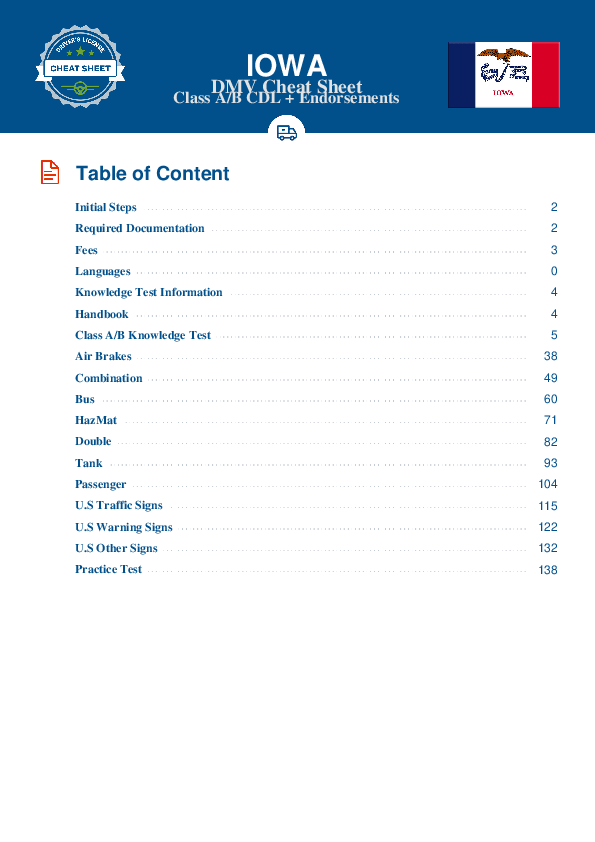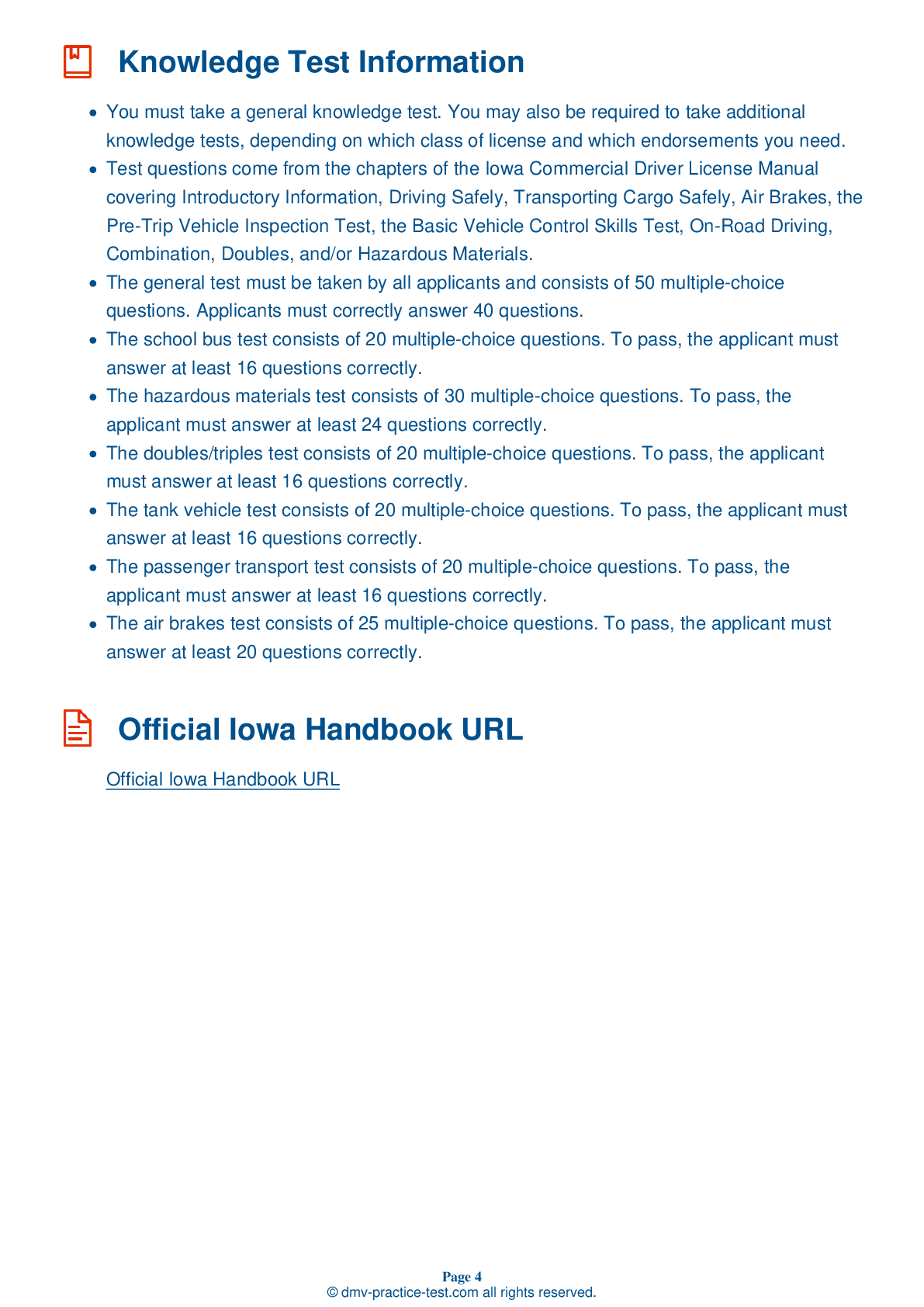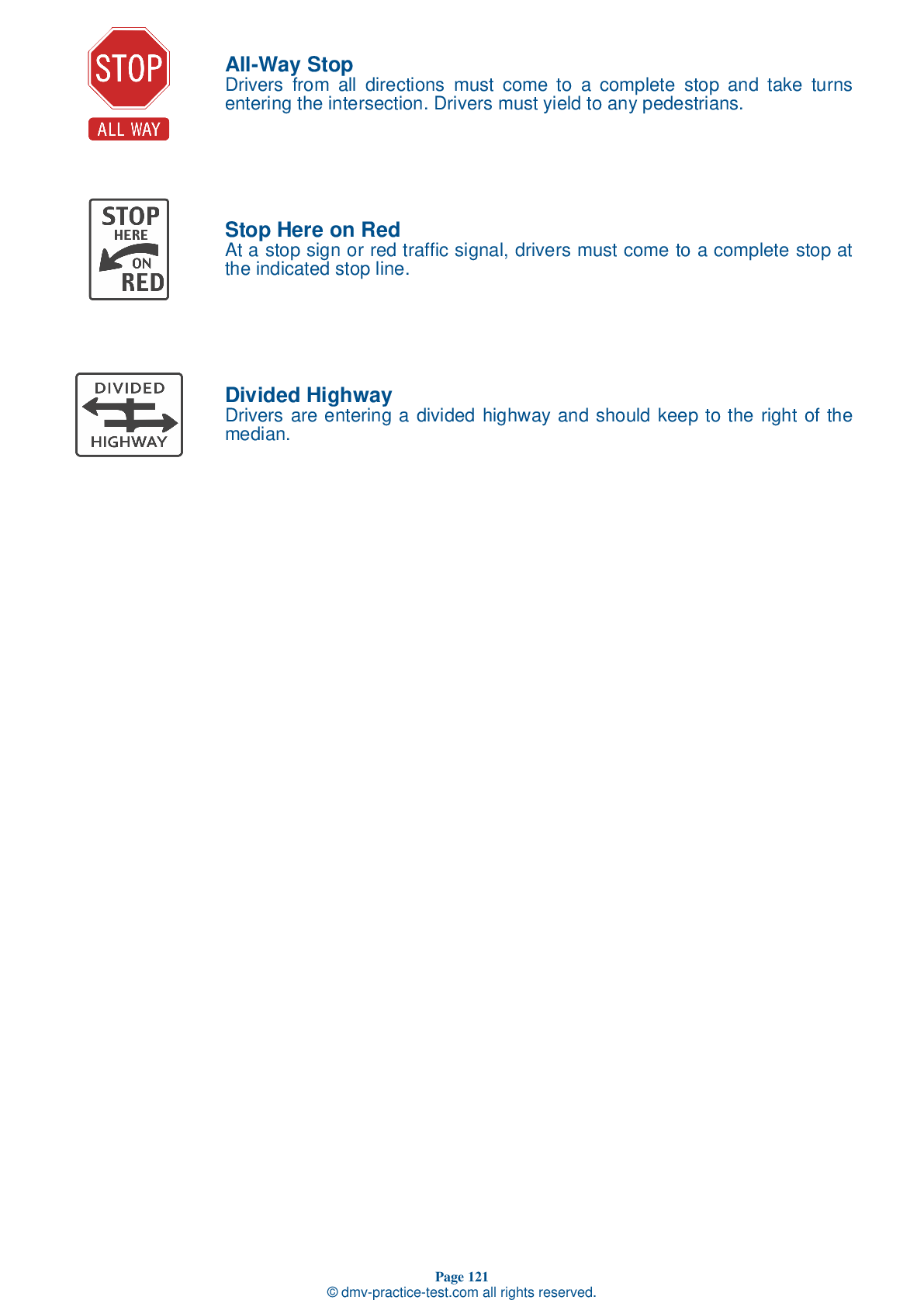Class B Driving Test | Iowa 2025 #1 Page 4 of 7
Train for FREE online with our Iowa class B license test. The official exam test consists of several obligatory parts, with all of them checking your knowledge of different blocks of road rules. If you need to obtain a IA CDL class B permit in 2025, practice as much as possible. Free sample tests published on our website will help you check and improve your knowledge and boost your grades. Please bear in mind that CDL class B requirements may vary from state to state.
22 . During a static leakage test, what is the maximum leakage rate that is safe for a double combination vehicle?
When performing a static leakage test on a double combination vehicle with air brakes, the leakage rate should be no more than 3 psi in one minute. If the air leaks from the air brake system at a quicker rate, the vehicle should not be driven because something likely needs to be repaired.
23 . When driving:
It is important to communicate your intentions to others on the road. Make sure to signal before turning or changing lanes, even if no other vehicles are nearby.
24 . When transporting a load, you should inspect the cargo:
Cargo and its securement must be inspected every time you take a break during a trip. Be sure to inspect the cargo at least every 150 miles.
25 . A low air pressure warning signal should activate:
In an air brake system, a low air pressure warning signal must come on if air pressure in the tanks falls below 60 psi. This warning signal may come in the form of a light, a buzzer, or a wig wag.
26 . Which of the following is not a cause of hydraulic brake failure?
Most cases of hydraulic brake failure come from one of two causes. The brakes may fail due to a loss of hydraulic pressure or due to overuse on long hills, causing the brakes to fade.
27 . Operating a CMV with any measurable amount of alcohol in your system will result in an out-of-service order for:
If you are found to be driving with any detectable amount of alcohol in your system, but are still below the legal limit of 0.04 percent, you will put out-of-service for a period of 24 hours.
28 . Watching the road ahead of you:
Always watch for hazards on the road ahead. Doing this will allow you time to react to hazards before meeting them.
See the exact questions that will be on the 2025 Iowa DMV exam.
99.2% of people who use the cheat sheet pass the FIRST TIME
Lillian MCcranie explains how our CDL study guide was helpful in passing the exam and recommends it to everyone.
Cameron tells us how he purchased the CDL exam, and found it to be a useful tool which helped him pass the exam and find a job.



